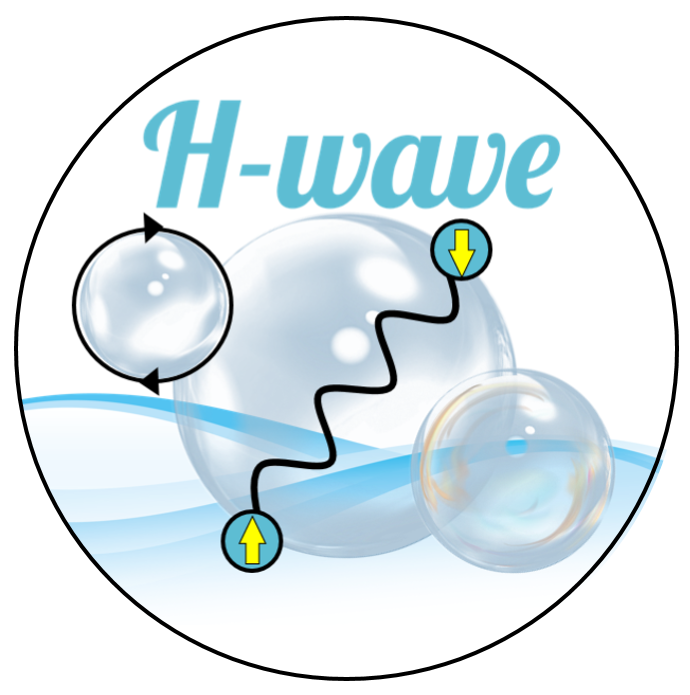6.1. Unrestricted Hartree-Fock method¶
6.1.1. Overview¶
The unrestricted Hartree-Fock approximation is a method to approximate two-body interactions into one-body terms by taking account of the fluctuation of the one-body operators up to first order. For a general two-body interactions, it leads to the following approximation:
In H-wave, the two-body interaction terms are defined as
It is noted that there is a one-body term as depicted in the second term of the above expression. Then, the Hamiltonian given by the one-body terms is generally denoted as
where we adopt a notation \(i\equiv(i, \alpha, \sigma_1), j\equiv(j, \beta, \sigma_2)\) for brevity, \(H\) denotes a matrix whose elements are \(H_{ij}\), and \(\hat{c}\) denotes a column vector whose elements are \(c_{i}\).
As \(H\) is an Hermite matrix, the Hamiltonian can be transformed into \(H=U \hat{\xi} U^\dagger\) where \(\hat{\xi}\) is a matrix whose diagonal elements are the eigenvalues of \(H\), and \(U\) is a matrix composed of the corresponding eigenvectors.
Then, let \(\hat{d} = U^\dagger \hat{c}\), and \(\mathcal{H}_\text{UHF}\) leads to
Therefore, the energy derived from the one-body interaction term of the UHF approximation is obtained by
In the numerical calculation, as \(H\) depends on the one-body Green’s function \(\langle c_{i}^\dagger c_{j}\rangle\) through the UHF approximation, the equation is iteratively solved to satisfy the self-consistency. Starting from a one-body Green’s function given as an initial value, it is updated through the relation
until the one-body Green’s function converges. Here, \(\beta\) denotes the inverse temperature \(1/ k_B T\), and \(\mu\) denotes the chemical potential. In the canonical calculation in which the number of particles is fixed, \(\mu\) is determined to satisfy the relation
for the number of particles \(N\) at every step.
In H-wave, the simple-mixing algorithm is employed to update the configuration. If we denote the one-body Green’s function at n-th step by \(\langle c_{i}^\dagger c_{j}\rangle^{(n)}\), the Green’s function at n+1-th step is chosen by mixing that of n-th step with the new one obtained in n+1-th step as
where \(\alpha\) is a parameter between 0 and 1. There are other update algorithms such as Anderson mixing, though they are not supported in the present version of H-wave.
In the coordinate-space UHF mode of H-wave, all interactions are mapped to InterAll form. The free energy at finite temperature is given by
6.1.2. Extension to wave-number space¶
The Hamiltonian given by the one-body terms is rewritten in the wave-number representation by the Fourier transform \(c_i = \dfrac{1}{\sqrt{V}} \sum_k e^{ikr_i} c_k\) as
Here, the interaction is assumed to have translational symmetry so that the coefficients depend only on the translation vectors \(r_{ij}=r_j - r_i\). It is noted that InterAll type of interaction is not considered in the wave-number space UHF mode.
As the Hamiltonian is diagonal with respect to the wave number \(k\), the calculation of the eigenvalues and eigenvectors reduces from diagonalization of a matrix of the size \(N_\text{site}N_\text{orbit} \times N_\text{site}N_\text{orbit}\) to that of \(N_\text{site}\) matrices of the size \(N_\text{orbit} \times N_\text{orbit}\), which lowers the calculation costs. Here, \(N_\text{site}\) denotes the number of sites, and \(N_\text{orbit}\) denotes the number of orbitals including the spin degree of freedom.
